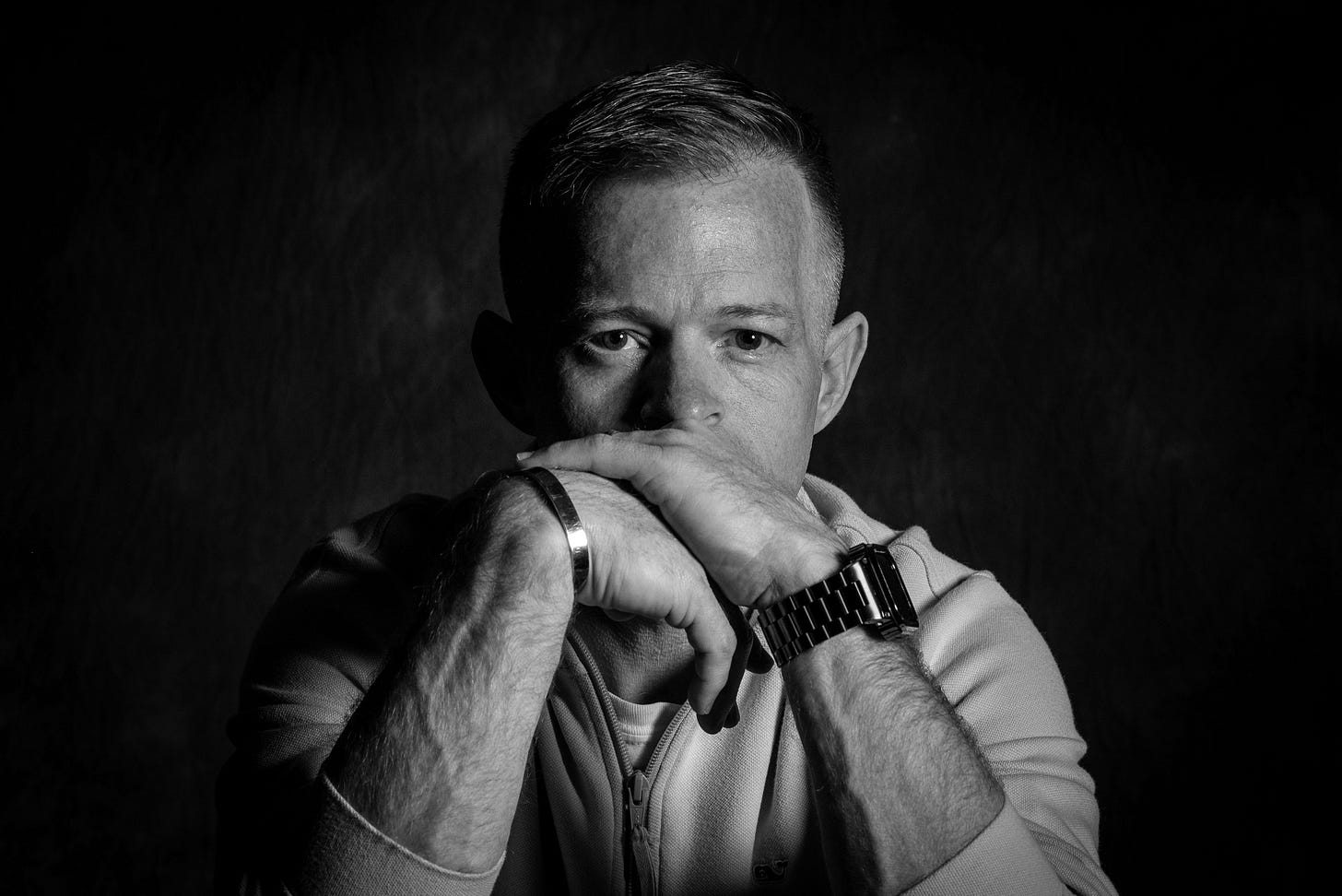“If we fail to find our inner rule and heed its guidance, we are easy prey to illusion, to maintaining a false view of ourselves, which only guarantees that we will be entangled in mistaken-identity poses for many years into our future.”
— Mary-Elaine Jacobsen
Lately, I’ve been standing at a variety of crossroads. The details aren’t important. What matters is that I’m choosing between things known and things unknown—between what looks stable and what feels aligned. On paper, the stable options make more sense. They check all the boxes. But when I sit with them quietly, I can feel the tension in my body. The weight of trying to force something into a shape it doesn’t want to fill. The subtle ache of being off course.
The other paths? They’re riskier. Less defined. They don’t come with a five-year plan. But they feel closer to who I actually am—and who I’m becoming.
We like to believe that certainty will save us. That if we just gather enough information, stay long enough, work hard enough, we’ll eventually feel at home in the life we’ve built. But sometimes, it’s that very pursuit of certainty that keeps us stuck. Sometimes, what we need isn’t more assurance—but more alignment.
⸻
The Girl Who Knew Herself
I lived in a dorm my freshman year at Indiana University. My roommate, Murray, and I got along well. One night, we were both invited to an off-campus party—a big house packed with strangers and loud music. It was the kind of wild, chaotic scene straight out of Animal House. Because we didn’t know anyone else there, we did what normal people do in that situation: we stuck together out of sheer social desperation.
At some point during the night, Murray met someone. Her name was Vera. She was very short and compact, with bouncy brown hair and a radiant smile. But her most striking trait was her charm. She moved through that house with effortless confidence, like everyone’s little sister. She always seemed to be smiling. She struck up conversations with total strangers, danced without hesitation, and could speak about any topic with enthusiasm and ease. She was completely and wonderfully authentic.
I don’t remember how the conversation started, but somehow Vera ended up talking with Murray and me about the aerodynamics of running—specifically, whether performance on indoor and outdoor tracks could be fairly compared. Murray had been a track athlete in high school, so he had plenty to say. I spent the rest of the night perched on the edge of a couch, listening to them debate spandex versus Kevlar, rubber versus expanded foam soles, and the importance of anti-chafing balm for endurance races.
I didn’t realize it at the time, but I was watching my roommate fall in love right before my eyes.
Within a month, he was completely stricken.
He called her dorm every day, leaving dozens of messages with her roommate—this was before the days of cell phones. He would jog nearly a mile to her dorm just to see if she was around, and when he found out she wasn’t, he’d jog back, wait an hour, and try again. I watched him do this three times in a single night—without ever actually seeing her.
One night, he stayed up past midnight writing her a six-page letter. After delivering it the next day, he realized he had forgotten to complete a major assignment due that morning. But instead of catching up that next night, he wrote her another six-page letter and stayed up late again.
Murray was head-over-heels in love. And from the way he talked, it seemed like she felt the same way.
But then, one night, Vera showed up at our dorm unannounced—and the moment she walked in, I sensed something was off.
She walked into our cinder block room, sat down at my desk, and smiled at Murray with her usual warmth—a twinkle in her eye, full of that bright, joyous energy. Then, while I pretended to read in the corner, she calmly and kindly began to explain that she just wasn’t that into him.
Only, she didn’t say it like that at all.
Instead, Vera talked about her summer plans—how she’d be traveling to Honduras for a research trip with her lab and would need to leave a few weeks before the semester ended. She said she wanted to focus her remaining time on aligning her studies with her long-term goals. She told Murray she was flattered by all the attention he’d shown her, and that she loved his energy. With a bright smile, she added that, given his interest in running and aerodynamics, he’d make a fantastic engineering major—and even offered to introduce him to a friend of hers who was graduating from the engineering department that spring.
Murray didn’t protest. There was nothing to push back against. He hadn’t been rejected outright—just gently rerouted. It was the most hospitable breakup imaginable. In fact, it hardly felt like a breakup at all. Vera simply extended an invitation to be a very good friend—something she seemed to collect everywhere she went.
Vera had something I’ve always admired in others—a solid sense of self.
Looking back, I think Vera could see that Murray’s passion, however sincere, was untethered. His energy wasn’t grounded in a shared connection, but in the intoxicating thrill of possibility. He didn’t yet know how to tell the difference. Vera did. She knew what she wanted, and she wasn’t willing to bend her future around someone else’s longing—no matter how flattering or intoxicating.
I couldn’t name these things at the time, but even then, I sensed that Vera was wiser and more grounded than the rest of us.
To this day, I still think about Vera—more than you’d expect for someone I barely knew. Not because I ever loved her, but because I admired her. In a world where so many of us are performing our way into worthiness, Vera simply was.
Most of us don’t even realize we’re contorting ourselves. We make decisions not because they align with who we are, but because they’re easy to explain to others.
We choose the path that’s most socially defensible, the one that looks good on paper, the one that won’t raise eyebrows at Thanksgiving.
We play it safe and call it wisdom, when often it’s just fear dressed up in a reasonable outfit.
We lower our risk tolerance—not because we lack courage, but because we’ve equated safety with virtue. And in doing so, we lose touch with the quieter truth: that a life designed to avoid disappointment is also one that will never feel deeply lived.
Vera didn’t live that way. She didn’t confuse attention with intimacy or affection with obligation. She had an inner compass and followed it without apology.
What she had—and what so many of us trade away in our pursuit of certainty—was clarity.
⸻
What We Trade for Safety
Looking back, I see now that Vera’s clarity wasn’t just admirable—it was rare. Most of us aren’t raised to cultivate that kind of inner compass. Most of us spend years chasing certainty: trying to guarantee love, trying to avoid rejection, trying to make the “right” choice that looks logical and passes inspection. We’re taught to pursue certainty—a steady job, a clear path, a checklist life. We build futures based on what feels dependable rather than what feels true.
But by doing this, we’re really trying to secure something outside of ourselves because we haven’t yet found something solid within.
And there’s a cost to that kind of certainty.
Chasing certainty often means losing touch with our own internal guide. We try to meet expectations—our own, or someone else’s—and in doing so, we make small, quiet compromises. We don’t mean to drift. But over time, the gap widens. And one day, we wake up far from where we thought we were headed, unsure how we got there—or worse, unsure who we’ve become.
Clarity, by contrast, rarely offers the comfort of a straight path. It doesn’t hand us a plan or promise we won’t get hurt. It doesn’t always come with a clear yes or no. But it’s honest. It asks us to listen—really listen—to the part of us that still recognizes what fits and what doesn’t. Even if we can’t explain it. Even if it costs us something.
Vera didn’t stay where she wasn’t meant to be—not because she had all the answers, but because she knew what questions mattered most. She knew her goals. She knew her limits. And she knew that kindness without alignment isn’t love—it’s performance.
These days, I think a lot about how many of us stay in places we’ve outgrown, waiting for certainty before we move. But maybe we’re asking the wrong thing of our lives.
These past few years, I’ve become more comfortable with less certainty out of necessity. The decision space of my future is vast, and every option seems to point in a different direction, each filled with too many contingencies to calculate. No amount of planning or research will ever buy me enough clarity to make any decision feel completely “safe.”
But I’m okay with that today because safe is no longer what I’m aiming for.
Because safe has never brought me joy. It’s never given me that quiet inner peace. It’s never made me feel alive.
So I ask myself: Am I the author of this story, or merely its narrator?
If I’m making decisions just to ensure a tidy arc or a palatable tale to tell, I’m already off center.
My story doesn’t fit cleanly into any category or genre. It doesn’t need to. I don’t need anyone else’s approval to validate the shape of my life.
What I need is to listen to—and trust—my own inner voice. When I do that, even when it results in less stability or certainty, I feel more stable because I am in alignment with myself.
Today, I’m not building a life to admire from the outside. I’m trying to build one that belongs to me.
About The Author
ES Vorm, PhD is a scientist and writer. He writes about recovery, the tension between selfhood and expectation, and the lifelong work of becoming. His essays explore the intersection of clarity, courage, and meaning.







